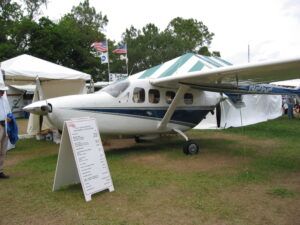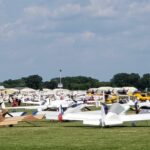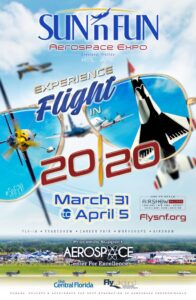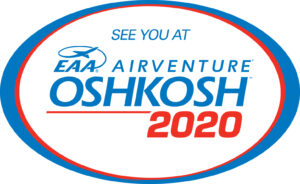Pressurized Aircraft as a low time pilot.
Recently, I was asked about buying a Pressurized aircraft. Of course, this was from a low time pilot looking for a good cross-country aircraft. Currently some older pressurized aircraft have cheap or low prices. Let me say right up front, they are cheap for a reason. I am not saying a pressurized aircraft is not a great deal. It is just that they come with their own set of issues. These issue can make owning one more expensive than a non-pressurized aircraft.
I was asked the following question. “At this point, I am a low time, private pilot. I realize I probably have a long way to go before I will be able to get insurance in the pressurized Skymaster with me as a pilot. But I do want to get to the point where I can fly it and have insurance. I thought with your unique history of being familiar with the Skymaster and dealing in aviation insurance, you might give me some guidance on the best way to get to a position of flying the Skymaster and getting insurance. I have around 75 (logged) hours of flight time.
What is the safest and most economical strategy for me to get insurance in a Pressurized Skymaster? Would it be beneficial for me to begin conducting dual instruction in the Skymaster? Could I complete all my instrument training, multi-engine training and type training in our actual airplane? What about completing at least 50 hours of dual instruction before acting as pilot in command. Can they limit the pilot in command activities to those required to complete the ratings and check-rides.
Even though this is a lot of dual, it is still safer and more economical for me than renting to build time and ratings.
Is such a scenario even possible?
If so, approximately what would it cost in premiums? If this is not practical, my second alternative would be to buy an older normally aspirated Skymaster (mid 60’s model) in the $50,000 range and follow the same path. Would this work?
Finally, if neither of these scenarios is possible, then what would you suggest to get me from here to there with the least amount of time and expense?”
So, let me clarify that the FAA requirements and the insurance requirements are not the same. You can get your multi engine rating with the 75 hours and be licensed to fly the Skymaster (pressurized or normal) without meeting any of the insurance “minimums’. That said, most people don’t want to do that.
Additionally, you can buy liability insurance and hull protection, or you can buy liability only. Liability only would probably be the minimum that you would want. This would provide coverage for property damage and bodily injury that you are found liable for. But, don’t get the impression that just because it is liability only, you will be able to get the coverage with less requirements. If the underwriters do not want to provide coverage because of your low hours or lack of ratings, it won’t matter if it is liability only or full coverage. You will still be a risk to them and they will still decline to quote or add a lot of requirements.
That said, you could probably get insurance coverage in a non-pressurized $50,000 Skymaster if you had about 250 hours total time, an instrument rating and about 25 hours of retractable gear time. Of course, it would probably cost you about $5,000+ a year in insurance premiums.
The next step is to shoot for about 500 hours of logged time, an instrument rating and about 50 hours of retractable gear time (oh, and a multi rating). You could probably get coverage in the Pressurized Skymaster with those minimums. You will still pay a decent premium and still be required to attend school and receive dual (probably 15 – 25 hours at least). Only a couple companies will provide coverage in that situation. Which is also a minor problem. This first year will be the most difficult. Expect high premiums, very little competition for your business and lots of dual.
In reference to getting the multi engine rating, I’d look into getting a conventional twin engine rating instead of just the Skymaster rating. A regular multi engine rating is good for ANY twins (Skymaster included). But a multi engine rating limited to the Skymaster (center-line thrust twins) is just that, limited to the Skymaster. The conventional multi rating has more potential and flexibility and the experience is well worth it.
This doesn’t mean you ever have to fly a conventional twin again, but at least you would be familiar with the behavior of a regular twin. If you can get the conventional multi rating there would be a better chance to rent a twin for a number of hours. Skymaster’s are all but impossible to rent. Of course, it’s the normal aviation recommendation, the more hours the better. More hours will only make the insurance buying experience easier
I would assume that the current insurance carrier will not cover the aircraft during any of the flights you make, if you are logging dual. There are clauses in all insurance policies that prohibit giving dual to pilots that are not listed on the policy for that purpose. Many people have tried to put their instructor on the policy (but not them) and then get the dual, the policy will be voided if there is a claim, so read the pilot requirements carefully.
Your ideas are probably the hardest option, you could try and be named pilot on the policy to receive dual only for some length of time. Maybe until you reach 150 hours total and become instrument rated…ask your agent if they can do that. If not, contact me and we can try and help you. And your proposal of dual is probably on the average to low end. At your total time, they would (if they agreed) require lots of dual and formal school.
Also, I am not saying pressurized aircraft are not a good investment. Its just be prepared for the increased maintenance because of the things necessary to keep the cabin pressurized. Just a few things extra expenses to think about. Additionally, almost all pressurized aircraft will require annual school by the insurance company. Does not matter if it’s a Pressurized Skymaster of a Cessna 421. So, figure that extra cost in your annual expenses.




